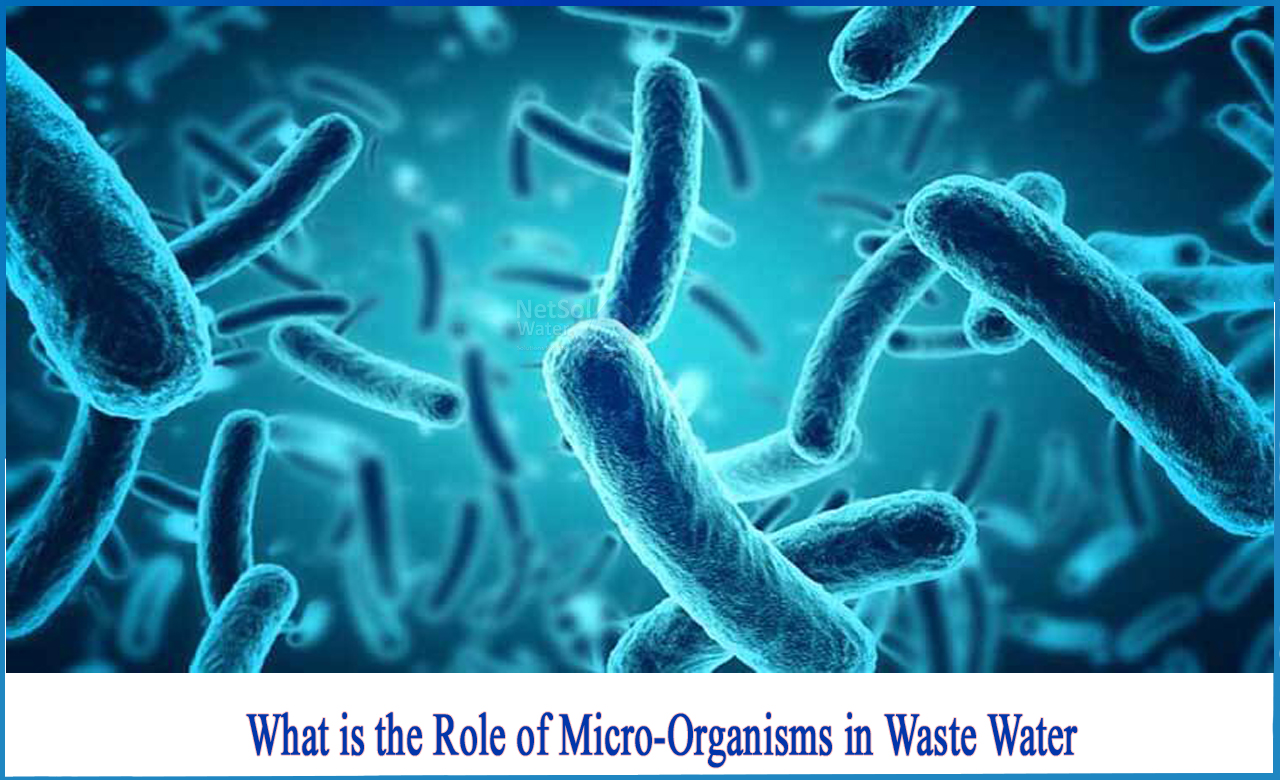What is the role of micro-organisms in waste water?
The degradation of receiving water bodies, such as lakes, rivers, and streams, is caused by the quality of wastewater effluents. Chemical and biological treatment are the two main processes for removing impurities from wastewater influents, but due to some drawbacks of chemical treatment, biological treatment is now used.
Microbes are important in terms of the environment, the economy, and society. Since centuries, these have been used to produce a wide range of products such as enzymes, probiotics, biofuels such as bioethanol, hydrogen gas, and so on. The breakdown of organic materials in wastewater is primarily mediated by microorganisms and their enzymes. They play a critical role and serve as the primary engineers in governing all ecological processes. They serve as a universal catalyst for providing ecological transformations.
While many various microbes are used in sewage treatment, three well-known microbes play an important role in keeping sewage clean. All of these bacteria contributes to the treatment process in a different way, ensuring that there is very little impact on the surrounding environment.
Results of using micro-organisms in waste water treatment:
- FOG (Fats, Oil and Greece) elimination
- BOD (Biochemical Oxygen Demand) reduction
- COD (Chemical Oxygen Demand) reduction
- TSS (Total Suspended Solids) reduction
- Odour elimination
Micro-organisms which are used in waste water treatment are:
Aerobic Bacteria: Aerobic bacteria are commonly used during new treatment plants in an aerated environment. This bacterium degrades pollutants in wastewater by using free oxygen in the water, which it then turns into energy that it can use to survive and multiply.
For this type of bacteria to be used properly, oxygen must be added mechanically. This ensures that the bacteria can do their job properly and keep growing and reproduce on their food source.
Anaerobic Bacteria:Anaerobic bacteria are commonly used in wastewater treatment. These bacteria's primary function in sewage management is to minimize the volume of sludge and generate methane gas from it.
The great thing about this type of bacteria, and why it is used again frequently than aerobic bacteria, is that methane gas could be used as an alternative energy source if washed and handled properly. Given the already increasing energy levels of wastewater treatment, this is a huge benefit.
Unlike aerobic bacteria, the above type of bacteria can obtain more than enough oxygen from its food source and does not require additional oxygen to function. Another advantage of using anaerobic microbes in sewage treatment is to remove phosphorus from wastewater.
Facultative: Facultative microorganisms in treating wastewater are bacteria that can switch between aerobic and anaerobic metabolism depending on their environment. It should be observed that these bacteria prefer to be in an aerobic environment.
Conclusion
Bacteria and other microorganisms are used in many industrial and municipal wastewater treatment plants to aid in the cleaning process. Choosing the right bacteria can be difficult because your choice is dependent on the condition of your area for effective use. If anaerobic bacteria are handled properly, wastewater treatment can also be a great source of alternative energy.
Netsol Water offers the best waste water treatment plant in India.
Contact Netsol for usage if you are thinking about installing the best waste water treatment plant.
Netsol Water is Greater Noida-based leading water & wastewater treatment plant manufacturer. We are industry's most demanding company based on client review and work quality. We are known as best commercial RO plant manufacturers, industrial RO plant manufacturer, sewage treatment plant manufacturer, Water Softener Plant Manufacturers and effluent treatment plant manufacturers. Apart from this 24x7 customer support is our USP. Call on +91-9650608473, or write us at enquiry@netsolwater.com for any support, inquiry or product-purchase related query.



